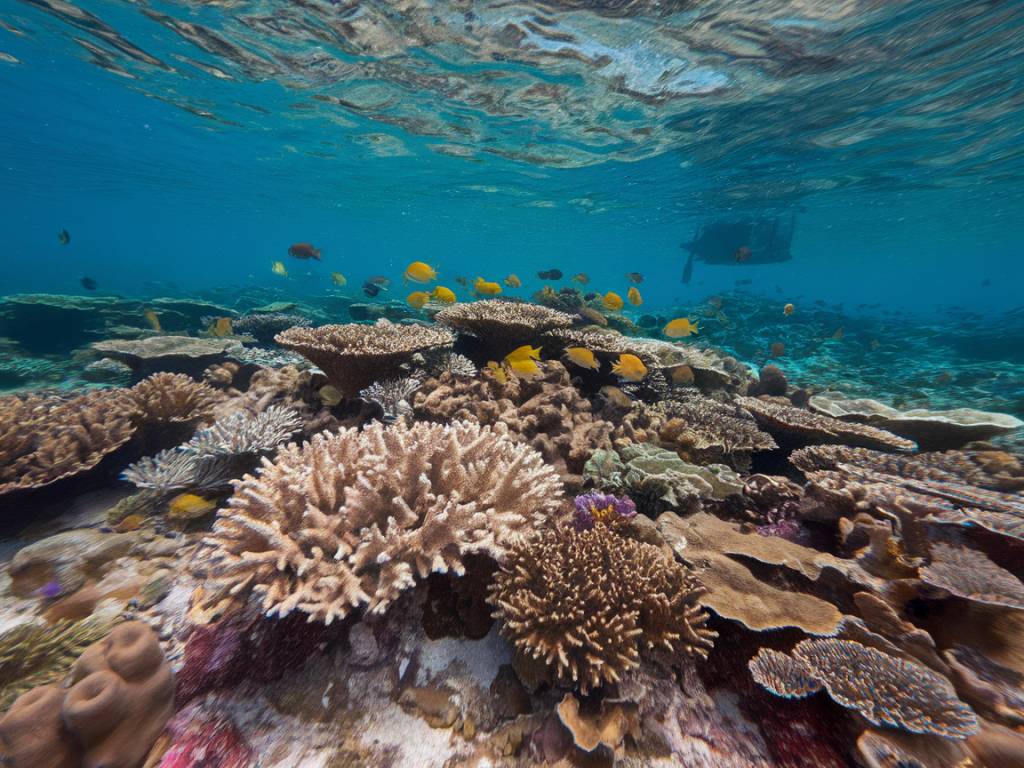Coral reefs, often referred to as the « rainforests of the sea, » are vital ecosystems teeming with life and biodiversity. However, with rising ocean temperatures due to climate change, these vibrant underwater gardens are under increasing threat. The question looming large is: What can be done to restore coral reefs in a warming ocean?
Understanding the Importance of Coral Reefs
Before diving into restoration efforts, it’s crucial to recognize why coral reefs matter. They provide habitat and shelter for approximately 25% of all marine species, support fisheries that billions of people rely on for food, and protect coastlines from erosion and storm surges. The economic value of coral reefs is immense, with estimated benefits averaging $30 billion annually from tourism, fisheries, and coastal protection.
The Impact of Climate Change on Coral Reefs
Coral reefs are sensitive indicators of ocean health, and their decline mirrors the challenges posed by climate change. Rising sea temperatures lead to coral bleaching, a phenomenon where corals expel the symbiotic algae living in their tissues, causing them to turn white and, if prolonged, die. Ocean acidification, another byproduct of increased atmospheric CO2, further weakens coral skeletons, making it harder for them to recover.
Innovative Restoration Efforts
Despite these challenges, scientists and conservationists are pioneering innovative strategies to restore coral reefs. Let’s explore some of these promising approaches:
- Coral Gardening: This technique involves cultivating corals in nurseries and then transplanting them back onto degraded reefs. Researchers have developed methods to fast-track coral growth, selecting resilient species that can withstand warmer temperatures.
- Assisted Evolution: By selectively breeding corals with a natural resilience to higher temperatures, scientists hope to create more climate-tolerant reefs. This approach involves cross-breeding corals that survived warm spells, potentially giving future generations a fighting chance against climate change.
- Microfragmentation: This innovative method involves breaking corals into tiny pieces to stimulate rapid growth, allowing them to cover large reef areas in less time. When combined with coral gardening, microfragmentation can significantly boost restoration efforts.
Community Involvement and Education
Restoration isn’t just a task for scientists; it requires community engagement and education. Local communities are often the frontline stewards of coral reefs, and their involvement is crucial. Engaging local populations in reef restoration activities not only fosters a sense of ownership but also ensures that conservation efforts are sustainable. Outreach programs that educate about the importance of reefs and sustainable practices can drive meaningful change.
Leveraging Technology
Advancements in technology offer new tools in the quest to save coral reefs. Remote sensing and satellite imagery allow scientists to monitor reef health over large areas, while underwater drones can assess damage and map restoration sites. Even artificial intelligence is being harnessed to predict bleaching events, enabling preemptive action to safeguard vulnerable areas.
The Role of Policy and Governance
Effective reef restoration also hinges on robust policy frameworks and governance. Governments play a critical role in regulating human activities that threaten reefs, such as overfishing and coastal development. International cooperation, particularly in managing greenhouse gas emissions, is vital to ensure the longevity of these ecosystems.
Personal Actions That Make a Difference
Individual actions, while seemingly small, can collectively lead to significant positive impacts. Reducing carbon footprints, supporting sustainable seafood choices, minimizing plastic use, and advocating for stronger environmental policies are all steps that contribute to coral reef conservation.
As we move forward, the restoration of coral reefs in a warming ocean remains a formidable challenge. It demands a collective effort, marrying scientific innovation with grassroots activism, technology with traditional knowledge, and individual actions with international cooperation. The vibrant beauty and ecological importance of coral reefs are worth every endeavor to preserve them. After all, in restoring coral reefs, we are also restoring the vitality of Earth’s oceans, a cause that touches us all.

